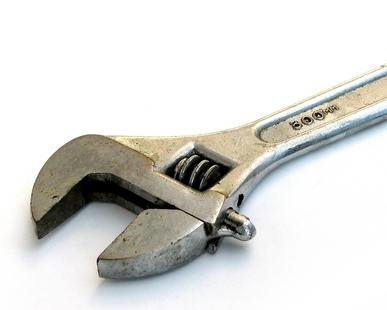
Your car broke its timing belt, or has a bad head gasket, and you want to rebuild the cylinder head while it is off the vehicle. You might also take this step as a preventative maintenance measure on a high-mileage vehicle. Either way, there are many benefits to rebuilding your vehicle's cylinder head. By resurfacing the head, adjusting the valve lash, and replacing the valve seats, you are ensuring the cylinder head will last for many more miles.
Remove the cylinder head if you have not yet done so.
Clean the cylinder head with degreaser or parts cleaner. Look carefully for cracks. If the cylinder head is cracked, it is not repairable as it has lost its structural integrity.
Remove the camshaft. Refer to a vehicle-specific repair manual for torque figures and diagrams. Many vehicles require the camshaft retaining bolts to be removed gradually and in order to prevent damage to the camshaft. Generally, you will start at the outside ends of the camshaft.
Remove the camshaft bearings and place them aside.
Remove the valves. Position a socket just larger than the valve stem over the valve and strike it with a hammer. This breaks the valve keepers loose from the valve stem. Compress the spring with the compression tool. Remove the keepers and guides. Decompress the spring, and remove it. Lift the cylinder head and slide the valve out the bottom. Repeat for each valve.
Remove head gasket material stuck to the cylinder head. Use a flat razor to scrape it off.
Check the cylinder head for warping. Flip the head so the side receiving the head gasket faces up, and lay a straightedge across the block from corner to corner. If the straightedge rocks or if you can see light under it the center, the head is definitely warped. Check both corner-to-corner angles (an X pattern). This method will only detect severe warping. Attempt to slide the narrowest feeler gauge under the straightedge. If you can insert any feeler gauge under the straightedge, the head is warped. If the head is warped, take it to a machine shop or auto parts store and have it resurfaced.
Replace the valve seals. This is another procedure likely requiring a trip to the machine shop. If the head was badly damaged, the seats where the valve seals fit need to be reamed out, something only a machine shop can do.
Replace the valves (only necessary if you have an interference engine that slipped or broke its timing belt). In an interference engine, the cylinders will impact the valves if the engine is out of time, damaging the valves. If the valves were not damaged, use the original valves.
Reinstall the valve keepers and springs.
Reinstall the camshaft. Reverse the removal pattern to bolt it in.
Adjust the valve lash.